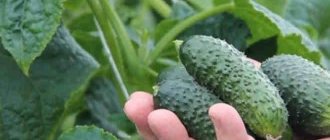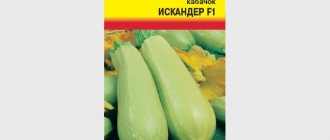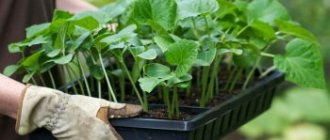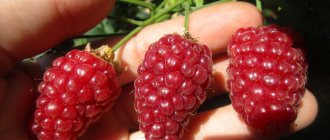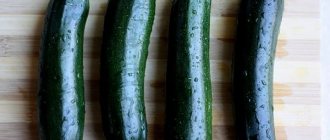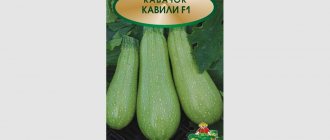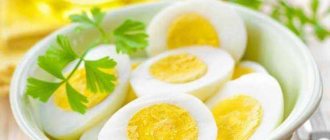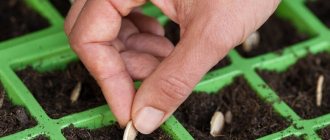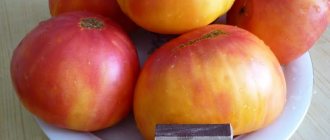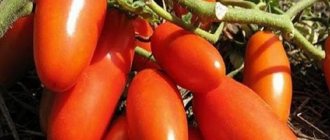Zucchini variety Aral F1: reviews and photos, cultivation, planting and care, yield
Zucchini is one of the most healthy and dietary vegetables; it is introduced into complementary foods for infants as one of the most hypoallergenic foods, and various dishes made from the delicate, tasty fruits of this vegetable crop are included in the diet not only of those who want to lose weight.
Therefore, this vegetable plant can be found in gardens in many Russian regions. And vegetable growers are trying to plant not only proven varieties of zucchini grown from season to season, but also new ones.
This article will talk about the hybrid variety of zucchini Aral, its main characteristics, nuances of cultivation, main advantages and diseases.
The content of the article:
History of the variety Zucchini Aral F1: description of the variety Zucchini Aral: productivity Advantages of the variety Diseases and pests Zucchini Aral F1: agricultural technology of cultivation Reviews about zucchini Aral
History of the variety
This hybrid was bred by Japanese breeders at the beginning of this century and, after tests, was included in the national register in 2009. Zucchini Aral F1 is intended for growing in garden beds and indoors.
This vegetable crop was added to the Russian State Register a few years later.
Aral zucchini is recommended for cultivation in the North Caucasus region.
Zucchini Aral F1: characteristics and description of the variety
This zucchini belongs to the early ripening varieties - the first fruits on the bushes of the Aral Sea appear within a month and a half after the germination of the seed material.
The Aral hybrid is a bush type, so the plants are compact, quite large, slightly dissected foliage of a bright emerald color
. Ripe fruits are easy to collect, and the bushes do not take up much space in beds in open or closed ground.
The first shoots appear 12-14 days after planting the seed. And ripe fruits are harvested approximately 25-30 days after emergence.
Aral zucchini - photo on a bush
The fruits of the Aral zucchini variety are best collected at the stage of milk maturity, when their diameter is about 5-6 cm, length - 15-18 cm and weight - about 400-450 g. The skin of the fruit is small in thickness, dense, light green color with small light spots over the entire surface, smooth and even. The pulp of the fruit is dense but tender, light in color with a characteristic pleasant taste.
Ripening Aral zucchini should be harvested approximately once every three days to activate the development of new ovaries
. The purpose of the fruits is quite universal; they can be used for preparing salads and snacks, as well as in preservation - for preparing squash caviar and other preparations. The harvested crop can be stored in appropriate conditions for at least 3.5-4 months.
Important!
To store the collected fruits, the harvest should be at the stage of full maturity. The harvest can usually be harvested until the first autumn frost.
Aral zucchini is highly resistant to most diseases characteristic of other varieties of this vegetable plant, as well as to attacks by pests.
During the process of fruit growth and ripening, this hybrid is immune to periods of drought and other changes in weather conditions. Aral zucchini is also easy to care for.
The harvested crop tolerates transportation well over different distances without losing its presentation and taste.
Zucchini Aral - video
Harvesting and application
Aral zucchini bears fruit all summer and autumn .
They are collected 2 times a week. It is advisable to pick medium and small unripe fruits - they have a more delicate and rich taste. But they are poorly stored and need immediate consumption or quick processing.
Zucchini is used to prepare fresh salads, stews, fried and baked. Zucchini can be dried or frozen for use in the winter.
Ripe zucchini is stored in cool, dry places for 4 months.
Advantages of the variety
The main advantages of the Aral hybrid include:
- early fruit ripening;
- high productivity;
- ripening fruits are approximately the same size, their ripening is extended over time and lasts from the end of June until frost;
- good presentation and excellent taste of ripe fruits;
- long shelf life of Aral zucchini at the stage of biological ripeness;
- the variety is highly resistant to most diseases;
- Aral zucchini is resistant to changing weather conditions.
There are no disadvantages noted in this vegetable plant.
Errors during cultivation
It happens that the fruits may not set or begin to turn yellow. This happens if they lack light and warmth or pollination of flowers has not occurred. To avoid such incidents, it is enough to cover the plants with film or only at night with lutrasil. You can water them with warm water to warm up the roots.
Often gardeners do not fertilize the crop. When zucchini lacks potassium, they begin to change their shape and become curled. If the tip of the vegetable is swollen, you need to fertilize the bush with potassium fertilizer, and if it is narrow, with nitrogen.
It is worth watering the crop in moderation. If you overdo it, especially during periods of high humidity, the roots of the bushes begin to rot. It happens that the zucchini outgrows. It’s okay, because this vegetable contains even more vitamins, so you can just eat it.
If you don't water your plants properly, don't give them mineral fertilizers, and keep them in cold, damp conditions, your vegetables may grow with a bitter taste.
Aral zucchini: agricultural technology for growing, planting and care
This variety is planted using seedlings or without seedlings. Moreover, Aral zucchini seeds or seedlings should be planted in open ground only when the soil warms up to a depth of 10 cm to 13-15 degrees Celsius.
When planting Aral zucchini seeds in open ground, you should prepare beds in advance, which are best located in sunny areas protected from the wind
. Humus or compost should be added to them, and when preparing in the fall, fresh manure can be added.
Growing zucchini - video
Aral zucchini seeds are planted in the soil in the last ten days of May or the first ten days of June
. At this time, the earth has already warmed up sufficiently, and the threat of return spring frosts has passed. As a result, the first fruits can be harvested in the first ten days of July.
By pre-planting Aral seeds for seedlings, the zucchini harvest can be harvested much earlier than with the seedless method.
. Zucchini seeds are planted in separate cups (preferably peat), since this vegetable crop has very delicate roots, so it is better not to pick them while growing seedlings.
Excellent productive varieties!
Zucchini Roller Zucchini zucchini Iskander
When planting seed material for seedlings in mid-late April, already in the last days of May, strong seedlings can be transplanted to a prepared place
. If the weather is warm at this time, the first fruits can be collected in the second decade of June.
Secrets of growing zucchini - video
Further care for Aral zucchini consists of regular watering, removing weeds and lightly loosening the soil. Water is introduced into the tree trunk circle of the bushes, slightly retreating from the roots. The rate of moisture consumption is 10 liters of water for each bush every 6-8 days. The water should be warm and filtered; if it is cold, root rot may occur.
When 4-5 permanent leaves appear on the Aral bushes, you need to hill up the zucchini so that they form additional roots.
When the first buds appear on this hybrid, it should be fed with complex mineral fertilizers. During the period of fruit ripening, it is necessary to apply fertilizers containing potassium and phosphorus under the bushes.
Important!
Fertilizers containing chlorine should not be applied to zucchini, as it inhibits this vegetable crop.
If the vegetative mass of the bushes begins to grow too actively, then some of the foliage should be removed. Then the plant begins to actively develop ovaries.
To pollinate emerging flowers faster, you need to treat the bushes with a solution of boric acid and sugar. This solution will attract bees.
It is recommended to collect ripe fruits every 3-4 days so that new ovaries appear faster.
Planting zucchini in the ground
The beds for planting zucchini of the Anchor variety must be prepared very carefully. Ideally, the place should be prepared and insulated in the fall by placing grass and leaves under the fertile layer. The layer should be approximately 10 centimeters. If you scatter the leaves on top, this will make digging much easier, but the compost formation period will slow down and the sun will not heat the litter
It is very important to pay attention to crop rotation. It is optimal to plant zucchini in soil in which cabbage, legumes or potatoes grew
When preparing the holes, you need to take into account that before planting they will be half filled with fresh compost. You should not ignore covering materials if the seedlings are planted early enough. Until the daytime temperature stabilizes, it is better to play it safe and cover the shoots with non-woven material.
Seedling shelter
Zucchini Anchor loves moisture, even slight drying of the roots will negatively affect the yield. To prevent the problem, before planting, you can carry out the so-called moisture-charging irrigation. First you need to mulch the soil, and when it dries slightly, loosen it a little. This prevents moisture evaporation and protects the root horizons from dehydration.
Important! If the plantings are thickened, you need to remove excess leaves located above the fruits. This may lead to a decrease in yield, but it promotes rapid fruit set.
You need to water the zucchini as the soil dries out. However, don't wait until it dries completely.
It is very important to control the balance, because waterlogging also negatively affects the harvest, and sometimes provokes the appearance of various fungal diseases
The seedlings need to be fed for the first time after the first leaf appears and for the second time after 10 days.
An adult zucchini needs 3 feedings a day: after rooting, before the flowers appear and on the eve of fruiting. It is worth noting that the plant’s needs depend on the period of development and the condition of the root system.
During periods of growth of voluminous squash leaves, the plant needs nitrogen. They are full of manure, ash and humus. Also, do not forget about urea, superphosphate and other mineral fertilizers that contain this chemical element, which is essential for zucchini.
During the flowering period, the use of phosphorus fertilizers is recommended. You can buy ready-made dressing or prepare it yourself by grinding 300 grams of frozen fish in a meat grinder. The fish mass is diluted in 10 liters of water, after which the fertilizer is ready for use.
Zucchini flowering period
Also, when growing zucchini, mineral fertilizers are used, for example, potassium nitrate, ammophosphate and others. And the most popular of natural nourishing substances remains ash. The use of such fertilizers is necessary in order to prevent potassium starvation. Deficiency can be recognized by the following signs:
- yellow and dry leaves of the plant;
- improper absorption of fluids and nutrients;
- weakening of adaptation to weather changes.
Don’t forget about such an important microelement for zucchini as boron. Feeding with boric acid solution is simply necessary
It belongs to the foliar type and is useful during cold weather; it also activates the formation of ovaries and strengthens the immune system.
Feeding with boric acid solution
As a rule, zucchini sets at a temperature of 10 to 30 degrees. When this happens, the plant's growth will slow down slightly - which is normal.
Advice! It is recommended to collect fruits approximately every three days. As a result, new zucchini will bloom and set more intensively, and the fruiting period will extend by 90 days.
While the zucchini is growing, do not forget about loosening and hilling, but this must be done with caution
Zucchini Aral: reviews from those who planted
On the Aral zucchini forum, vegetable growers left a large number of reviews, some of which are given below.
Olga, 41 years old, Serpukhov region: I planted the Aral variety of zucchini for the first time last year and was pleased with the result. I planted plants with seeds directly in open ground in the last ten days of May. and in the second ten days of July the first ripe fruits were already collected. Fruiting of this hybrid continued almost until the first cold weather. As a result, over the summer I collected 4.5 kg of ripe zucchini from each bush, some of which I stored.
Marina, 50 years old, Tver region: I planted the Aral variety of zucchini using seedlings, but I want to note that I did not have any special problems with this vegetable plant. I prepared the beds for this crop in the fall. So, at the end of May, I planted strong seedlings in a prepared place, and then only watered them in a timely manner and removed weeds. Throughout the summer, these zucchini bushes did not suffer from any disease. The yield of the hybrid was stable, despite the vagaries of the weather. Now I recommend the Aral variety to all my gardening neighbors.
Tatyana, 49 years old, Penza region: This variety was recommended to me by my neighbors in my summer cottage. I planted seed material at home, and about a month after the first shoots appeared, I already planted the seedlings in the beds. The yield of this variety is quite high if you water the bushes on time and grow the zucchini on fertile soils. In general, I liked the Aral variety of zucchini, although there are also larger-fruited and high-yielding varieties of this vegetable crop.
Hybrid Aral is characterized by stable yield throughout almost the entire summer season, does not slow down the growth and development of fruits even in unfavorable conditions, and is resistant to most diseases
. Therefore, this Japanese variety of zucchini is currently popular among many Russian vegetable growers from different regions of the country.
How to grow
Hybrid Aral usually does not cause problems for farmers . It grows well and produces abundant harvests. But this can only be achieved with proper care of the vegetable.
The place for zucchini should be warm and sunny. This is a light-loving vegetable, the ground under it should warm up well. It is better to plant where onions, potatoes, beans, and cabbage used to grow.
The Aral Sea is planted with seeds or seedlings.
Planting seeds and seedlings
Step-by-step instructions for sowing seeds :
- The seeds are soaked in water until completely swollen (about 12–18 hours) and those that float are removed.
- The swollen ones are treated with a 1% solution of potassium permanganate, and then heated for 5 hours at a temperature of 50 °C.
- Holes are dug in the soil 4-5 cm deep at a distance of 60 cm from each other.
- Place 1 seed per hole and sprinkle with soil. Before germination, the soil is covered with film to retain heat.
- After germination (7–10 days), the film is removed.
Attention! Planting seeds is possible only in previously prepared, loosened, fertilized soil. Sow in mid-May or early June, when the ground is well warmed up. This planting method is suitable for the southern regions.
Step-by-step instructions for planting seedlings :
- Seedlings require separate containers - cups up to 15 cm deep. They are filled with soil that contains peat, humus, turf soil and rotted sawdust.
- The seeds are planted to a depth of 3-4 cm, irrigated with water in a small amount and covered with film. Covered cups are kept at a temperature of 25–28 °C.
- Shoots appear on days 7–10, and the film is removed from them. Containers with soil are placed in a well-lit place.
- After 2 weeks, when the seedlings have stretched, they are fed with a mixture of bird droppings and superphosphates diluted with water. Fertilizing is consumed in the amount of 100 ml per 1 plant.
- After 10 days, the seedlings are fertilized again, but with a solution of wood ash.
- A few days before planting in the ground, the seedlings are hardened off. To do this, take it out into the fresh air.
- Zucchini is transplanted into open ground no earlier than 30 days from the date of sowing.
Carob syrup (carob syrup): beneficial properties and contraindications
Seedling planting of Aral F1 zucchini also takes place in May . But in this case the harvest is obtained 2 weeks faster. This option is recommended for northern regions.
Hybrid care
Water the zucchini at or near the root. Water should not get on the leaves. For a week, one bucket of warm water is poured under one bush.
The soil must be loosened , preventing the formation of a crust on the surface. This promotes proper development of the root system and access to oxygen in the soil. During the loosening process, weeds are removed. To prevent them from growing and the earth to receive more nutrition, the surface is mulched with straw or peat.
The Aral bushes need to be hilled . This is done after the appearance of the fifth leaf.
Fertilize zucchini several times . The first feeding is with minerals during flowering. The second time, potassium and phosphorus fertilizers are applied when the bushes are just beginning to bear fruit.
For Aral zucchini it is very important that the sun warms the ground , so excess leaves are torn off.
It can be useful:
Step-by-step guide to growing zucchini in a greenhouse
Growing zucchini and care in open ground
Where and how to properly plant zucchini seedlings
Features of cultivation and possible difficulties
Even when growing unpretentious crops, inexperienced farmers can make mistakes :
- Plants rot and turn yellow, fruits do not set. This occurs due to cold and humidity. To solve the problem, plants are covered with film and watered only with warm water (20 ° C).
- If the fruit is irregularly shaped, with a widened end, the problem is potassium deficiency. It is replenished by sprinkling the soil with ash.
- If the tip of the zucchini is narrowed, it means there is not enough nitrogen. Bird droppings or manure should be added to the soil.
- Rotting fruits are a signal of excess moisture. It is necessary to stop watering the soil and remove rotten fruits.
- Bitterness in the fruit may be a sign of illness. If only some fruits are bitter, they may not have enough moisture.
Diseases and pests
Hybrid Aral F1 has relative resistance to fungal and infectious diseases :
- powdery mildew;
- anthracnose;
- white rot.
The plant is resistant to viruses , but can be attacked by insects, so preventive spraying with onion infusion should be carried out.
